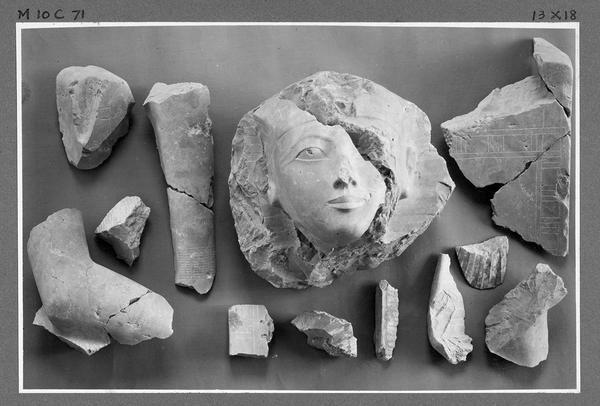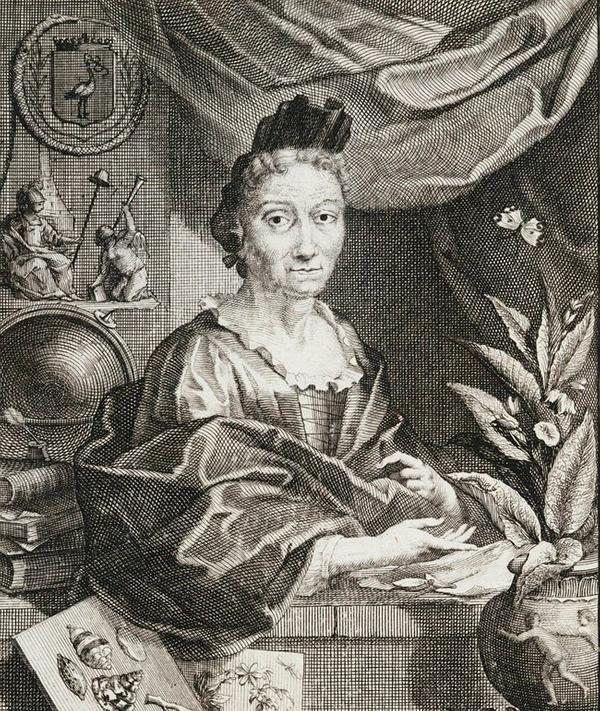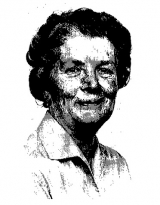The diverse face of biology II
History is full of women who made enormous contributions to science. While historically their efforts have been neglected, in recent years the number of women highlighted in textbooks has increased proportionally with the number of women in the field of science covered, indicating that textbooks are matching a changing demographic landscape.1 This has led to the increased recognition of pioneers of science, including Marie Curie, Ada Lovelace, and Rosalind Franklin. However, there are many more amazing women who have changed the face of science who are not such household names, dating back from ancient history all the way to present times. Here we explore the lives of just three of the women who have changed the face of biology.
Queen Hatshepsut

The field of plant exploration has a fascinating history, having attracted many great adventurists, naturalists, and travellers over the years. We mainly consider plant exploration in the context of a post-Darwinian era, with an increasing understanding of genetic diversity and with plants collected for their particular properties in medicine or agriculture, or for conservation purposes. This has led to the establishment of many botanical gardens around the world. However, the first recorded expedition for obtaining living plants and establishing a botanical garden dates back to around 1460 bce, on the orders of Queen Hatshepsut of Egypt.
Plants were a vital component of Egyptian life, playing a key role in essential aspects such as food and medicine, as well as featuring heavily in culture through their use in religious ceremonies and the creation of perfumes. While the modern scientific research methods as we know them had not yet been established, there was certainly a scientific method and mindset employed by the Egyptians in their exploration of plant species, as demonstrated in the early medicinal texts such as the Ebers Papyrus from 1550 bce, which provides a detailed insight into the extensive herbal knowledge of the Egyptians.
Harshepsut was the daughter of Pharaoh Thutmose I and the Queen-Wife of her half-brother Pharaoh Thutmose II. As such, the early part of her life conformed to the traditional female role of supporting Egypt’s male royals. When her husband died in 1479 bce and her stepson was appointed heir, she took on the role of regent Queen. However, as time passed she began to see her role not as a temporary overseer but instead as Egypt’s rightful ruler. She began referring to herself as “Lady of the Two Lands”, before making a play for power and declaring herself Pharaoh. To secure her newfound power, she had herself portrayed as a man in her portraits and statues and made claims that the god Amun was her father, insisting he meant for her to take charge of Egypt.
While previous Egyptian leaders had sort to import key plant derivatives such as resin from frankincense (Boswellia) and myrrh (Commiphora), Queen Hatshepsut realised the importance of acquiring sustainable supplies. As such, she ordered that living specimens be collected and brought back from the land of Punt on the north-eastern coast of Africa and had them planted in a newly establish botanical garden in holy grounds of the Temple of Karnack. An image of the expedition preserved in a temple at Deir el-Bahri shows two ships being loaded with living plants, and inscriptions on the wall of the temple celebrate the fact that at least 31 of the transplants survived and were established in the temple grounds.
Following Queen Hatshepsut’s death, her stepson and successor, Thutmose III, sought to eradicate her memory and ordered her monuments defaced or destroyed and her name removed from the list of kings. Hatshepsut’s groundbreaking reign therefore remained a secret for centuries, but when archaeologists began deciphering the hieroglyphs at Deir el-Bahri in 1822, and then found her tomb in 1903, Hatshepsut’s legacy as Egypt’s powerful female pharaoh was restored. Although the destruction of artefacts makes it difficult to date the key events in Hatshepsut’s life, luckily enough have survived to recall her plant exploration.
Maria Sibylla Merian

Maria Sibylla Merian was born in Frankfurt in 1647. Her father, a renowned illustrator, died when she was 3 years old and she was subsequently raised by her mother and stepfather, a still-life painter by the name Jacob Marrel. Jacob taught Maria painting and she helped him collect insects and other specimens for his compositions. Plants and insects were Maria’s main subjects to paint, and she began collecting caterpillars to study the insects’ maturation into butterflies. Even in these early years, her observations and illustrations of insects and plants in various life stages were remarkable for their scientific quality.
At the age of 22, Maria married her stepfather’s apprentice, Johann Andreas Graff, and in the following years they welcomed their two daughters, Johanna Helena and Dorothea Maria. While raising her young family, Maria created a series of watercolour engravings of popular flowers that was published between 1675 and 1680 in a three-volume Book of Flowers or Blumenbuch. In 1679 she also published the first volume of Der Raupen wunderbare Verwandelung, und sonderbare Blumen-nahrung [Caterpillars, Their Wondrous Transformation and Peculiar Nourishment from Flowers], which depicted in detailed illustrations with accompanying text each stage of metamorphosis in a great variety of moths and butterflies, alongside their plant food source. The work was celebrated for its scientific accuracy and for bringing a new standard of precision to scientific illustration.
Unusually for the time, Maria legally divorced her husband in 1691 after living separately for several years, during which time Johann remained in Germany while Maria and her daughters moved to what is now the Netherlands. Eight years later, Maria and her youngest daughter, Dorothea Maria, set sail for Suriname, South America. This voyage gave Maria a unique opportunity to explore new species of insects and plants, and, together with Dorothea, she collected, studied, and composed illustrations of the diverse species of plants, insects, and other animals found in the Surinamese jungle. The trip resulted in some of the most important work of her career: 60 engravings illustrating the different stages of development of a variety of Suriname’s insects published in The Metamorphosis of the Insects of Suriname. This book was one of the first illustrated accounts of the natural history of Suriname, and her work on insect development and the transformation of insects through the process of metamorphosis contributed to the advancement of entomology in the late 17th and early 18th centuries.
The year of Maria’s death, her paintings were purchased for Peter I, Tsar of Russia. Dorothea Maria was subsequently summoned to St Petersburg, where she worked as a scientific illustrator for the Tsar and thus became the first woman to be employed by the Russian Academy of Sciences.
Alma Howard

Alma Howard was a radiobiologist who made fundamental contributions to cell biology. Born in Montreal in 1913, Alma began her education at the Trafalgar School for Girls before continuing her studies at McGill University, graduating with a BSc (Hons) in Botany and Zoology. In 1938 she submitted her PhD thesis, The correlation between chromosome behaviour and susceptibility to mammary gland cancer in mice in the Department of Genetics under the supervision of Professor CL Huskins, for which she earned the Governor General’s Academic Medal.
By the time she was 36, Alma had joined the LH Gray team at the UK Medical Research Council’s Radiotherapeutic Research Unit at Hammersmith Hospital in England. Here, she worked alongside physicist Stephen Pelc, who shared her interested in the biological effects of ionising radiation. Together, Alma and Stephen developed an experimental system, growing the bean Vicia faba with an isotopic label (32P). They showed that this isotope was incorporated into DNA in the nucleus only during a particular stage, around 12 hours after the last division. This phase is now known as interphase. By analysing cells of the meristem, plant tissue composed of undifferentiated cells capable of cell division, they also deduced that DNA synthesis takes around 6 hours, and that cells enter prophase of the next mitosis only 8 hours after DNA synthesis is completed. Assigning a cellular timeline, Alma and Stephen were the first to describe the concept of the cell cycle and four discrete periods:
- cell division
- the pre-S-phase or G1
- a period of DNA synthesis known as the S-phase
- the pre-mitotic period or G2
This laid the foundations for the development of cell cycle studies in genetics and molecular biology that have determined the time parameters of the cell cycle, the biochemical and molecular events that occur at each stage and in various groups of organisms, the establishment of checkpoints, and universal control mechanisms. The consequences of this work have been vast and wide reaching, with relevance to the health, wellbeing, and biology of all organisms, from the growth and development of these organisms, to cancer and ageing in humans, to the potential for disease and injury repair via stem cell therapies.
Later in life, Alma went on to head the radiology group at the Paterson Laboratories in Manchester, subsequently being promoted to deputy director. She also founded the Journal Current Topics in Radiation Research and became joint editor of the International Journal of Radiation Biology.
Alma’s contributions to science have continued to this day. Two years after her death in 1984, friends, family, and colleagues established an endowment to McGill University (Canada) for the purpose of promoting the field of genetics. These funds have been used to sponsor public and scientific meetings on topics related to genetics, and to support graduate students and postdoctoral fellows.
References
- Wood S, Henning JA, Chen L et al. A scientist like me: demographic analysis of biology textbooks reveals both progress and long-term lags. Proc Biol Sci 2020; 287: 20200877.
- Janick J. 2007. Plant exploration: from Queen Hatshepsut to Sir Joseph Banks. HortScience 42: 191–196.
- PlantExplorers.com. Ancient Egypt.
- Rogers K. 2011. Maria Sibylla Merian. Encyclopaedia Britannica. Date last updated: Mar 29, 2021.
- Klein J. A pioneering woman of science re-emerges after 300 years. New York Times Jan 23, 2017.
- Dubrovsky JG, Ivanov VB. Celebrating 50 years of the cell cycle. Nature 2003; 426: 759.
- McGill University. The Alma Howard Lecture in Molecular Biology.
- Mitchell A. Seeing double. Nat Rev Mol Cell Biol 2001.
